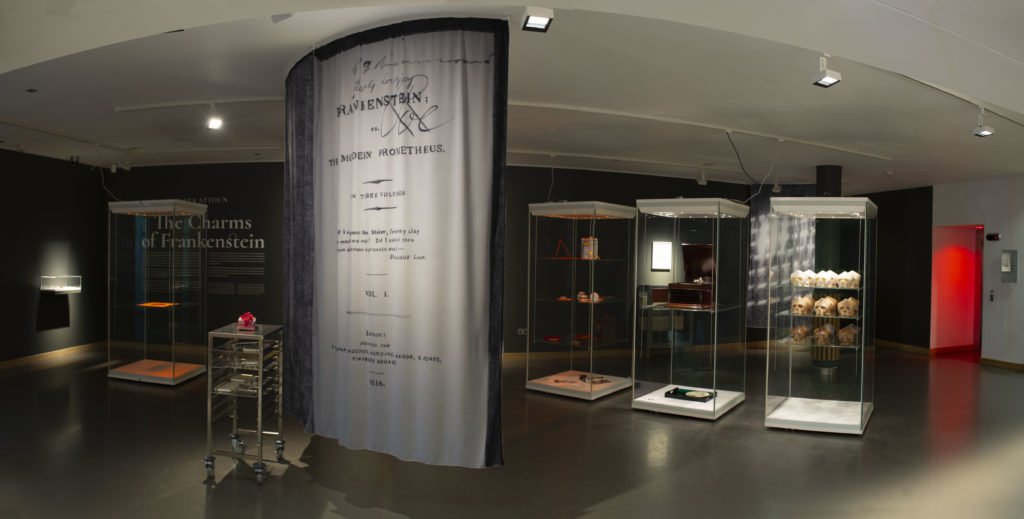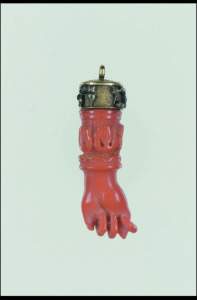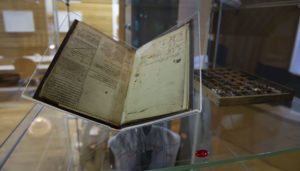Artist Maya Attoun engages with the Jewish Museum collection

Maya Attoun (b. in Jerusalem, 1974) is an award winning artist whose work has exhibited in solo and group exhibitions across the world.
This October, to celebrate the bicentenary of Mary Shelley’s Frankenstein, Maya created a site-specific art installation within the galleries of the Jewish Museum London, combining her own artwork with the museum’s collection and personal objects.
Here Maya talks more about her relationship with ‘Frankenstein’, the process of creating this interactive art exhibition and why she chose to work with the collections at the Jewish Museum London.
 You have been fascinated by Mary Shelley and ‘Frankenstein’ for a while. What was the particular appeal of working with the Jewish Museum London in creating your new exhibition?
You have been fascinated by Mary Shelley and ‘Frankenstein’ for a while. What was the particular appeal of working with the Jewish Museum London in creating your new exhibition?
I’m an Israeli artist who is obsessed with a British author, so in many ways approaching London through the lens of British Jewish history seemed like an interesting twist to take while I was here. I wanted to address the connection between Jewish culture and history and the literary Sci-Fi and gothic genre through objects, some found, some made and some borrowed from the museum’s collection. To shift and mutate between real and fantasized (hi-)stories by creating a new assembly of objects. To create a collision between contexts and contents through the syntax shift between images and objects.
How does your art benefit from engaging with the museum’s collection and how does inserting your artwork in our historical displays enhance it?
I work mostly with site-specific installations and when I started thinking about an exhibition in the museum, it became clear to me that I want to know more about the museum and about the historical artefacts. My research was intuitive and was led by key images and themes from the story of Frankenstein together with my artist book in the form of a weekly planner that I published in celebration of Frankenstein’s bicentennial.
Are there any objects in our collection that resonate particularly strongly with the story you are telling through the exhibition?
 One of the strongest objects that I found in the collection was a book of spells by Dr Falk, a kabbalist and alchemist wh0 fled to London in the 18th century. His preoccupation with the occult and the initials of his name Dr F, played as a ghost of Dr Frankenstein at the museum. In one of the cases I’ve created a display based on the elusive image of Dr F.
One of the strongest objects that I found in the collection was a book of spells by Dr Falk, a kabbalist and alchemist wh0 fled to London in the 18th century. His preoccupation with the occult and the initials of his name Dr F, played as a ghost of Dr Frankenstein at the museum. In one of the cases I’ve created a display based on the elusive image of Dr F.
How did you choose the objects you wanted to show alongside your work?
The exhibition starts in the Welcome gallery and moves through the cafe, the Judaica gallery and the History gallery. I have asked museum visitors to use the planner as an exhibition guide and to follow the trail of numbered red stones I created throughout the museum. These stones refer to the numbers of the weeks and months in the planner. I have created connections between images and objects that are mostly visual and associative, yet the artworks in the planner did affect my choice of objects.
Do you have a favourite object in our collection? Which one and why?
My favourite object is the 17th-century red figa amulet. It was one of the first objects I saw at the museum and I was drawn to the image of the red hand which appears in the planner as well. The amulet found its way into Judaism from pagan times via Christianity in a similar way to how the myth of the Golem found its way from Jewish tradition into Frankenstein.